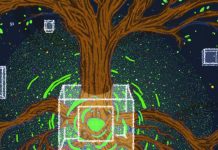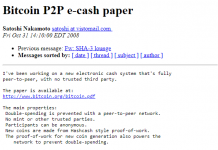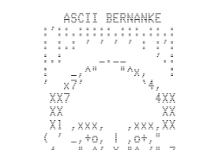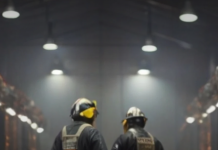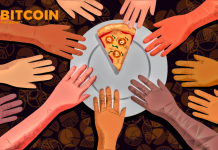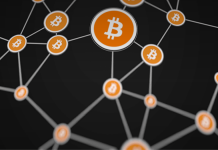What follows is a fairly simple and mostly true description of the way Bitcoin works using a couple of real-life examples but without using citations because I’m lazy and I don’t cite sources in everyday casual conversation.
Over the last several months, the digital currency Bitcoin has attracted a lot of attention. With this has come a lot of misunderstanding and confusion about both the nature and role of the currency. To me it seems like the biggest reason people have trouble understanding how Bitcoin works is that people simply don’t understand how currency works. Not how the anti-theft stripes, holographic markers, special fibers, and other security features work, but how the philosophical concepts behind currency function.
Rai Stones
In the Western Pacific Ocean there is an island called the Island of Yap. For several hundred years, the native Yapese used a unique form of currency – called Rai, or stone money. The stones, some measuring several feet across and weighing many thousands of pounds, were quarried on the island of Palau hundreds of miles away, where they were carved into doughnut-like disks, and transported by canoe back to Yap. The smaller ones were traded like coins, but the larger ones were often simply deposited at some prominent spot on the island and left to remain there.
The Rai stones served no function other than as money. They had no ornamental value, no industrial usefulness, no particular use of any kind, other than as a currency.
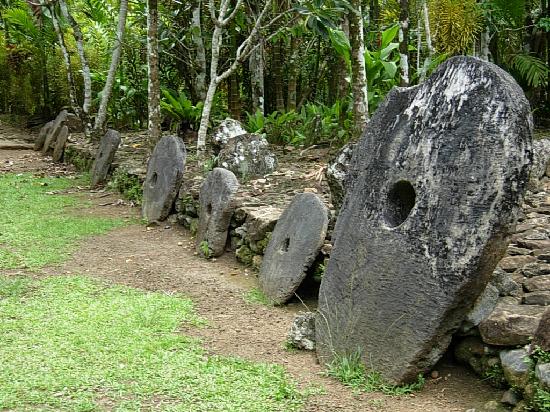
When the owner of a large Rai stone wished to exchange it, he would simply declare to the community that ownership had changed, and the new owner would be recognized; the physical stone would never be moved. Nothing would trade hands. As the stones were traded back and forth, each stone would come to have a long chain of custody, recognized communally and stored in the collective memories of the islanders. This transaction ledger was understood by the network of the community, and disputes over ownership were almost non-existent. Certain stones came to have more value than others by virtue of their history, or the reputation of past owners.
There is a particular case, embedded in the mental record of the island, of a large Rai stone which was lost at sea during transport to from the quarry to the island. The crew returned and each testified to the size and quality of the stone. It was decided that there was no reason why the stone couldn’t be entered into the economy. It made no difference that it was sitting at the bottom of the ocean – it was the communal agreement that was important. And so the stone sat on the sea floor, where it was exchanged and traded just like any other stone.
Despite their strange characteristics, Rai stones were undoubtedly currency. The Yapese didn’t mind that nobody else used anything like Rai stones in their own economies. The value was a function of the agreements between the members of their community and didn’t depend on any outside guarantee or promise.
The Real
During the late twentieth century, Brazil had an inflation problem. For more than a decade starting in about 1980, hyperinflation, at times as high as thousands of percent annually, destroyed the Brazilian currency – the cruzeiro. At that level of inflation, prices visibly rose every day. Store owners had to put new prices on their items every morning, and by evening, the prices had to be changed. Long-term economic planning was impossible, and the misery and unrest that accompanies such conditions was rampant.
In 1994, the Brazilian government enacted a series of monetary and fiscal policy changes in an effort to control inflation. This series of changes was collectively called the Plano Real – the Real Plan. One aspect of the Plano Real was aimed at breaking the inertia of the inflation. Because people expected prices to rise, they accounted for higher prices in the future by raising prices in the present, making inflation a positive feedback loop of nightmarish quality.
The government created an imaginary virtual currency called the Unit of Real Value and began to price taxes and wages in URVs. The URV was pegged to the value of the dollar, a relatively stable currency. The exchange rate between the cruzeiro and the URV floated freely, and each day the cruzeiro was worth less and less relative to the URV. There were no URV notes or coins, so all payments continued to be made in cruzeiros, but calculations were made in URVs. Shopkeepers and other merchants began to mark prices in terms of URVs. The cruzeiro continued to inflate, but the URV was stable. Prices quoted in URVs didn’t fluctuate. Transactions were done with cruzeiros, but both the buyer and the seller would calculate the cost in URVs. After a short time, people became used to calculating in URVs and converting to cruzeiros at the time of purchase.
Once the Unit of Real Value was widely used in Brazil, the cruzeiro was abolished and the Brazilian government began to print a new currency, called the Real because it was the physical implementation of the imaginary Unit of Real Value. It has remained stable to this day.
Bitcoin
Bitcoin is a digital currency. Like the URV, It has no physical units such as coins or notes. There are tokens (which you may have seen, as photos of them are featured in virtually every media story on the subject), but these are not themselves Bitcoins; they are merely redeemable for Bitcoins – coupons, perhaps.
Not only are there no physical units of Bitcoin, there are actually no digital units either. There is a public transaction ledger – called the blockchain – which records all transactions, but there are no actual items exchanged. When a Bitcoin is “exchanged”, an entry is made in the blockchain describing the transaction, and the transaction becomes public knowledge across the Bitcoin network. Like the Rai stone at the bottom of the ocean or the URV, nothing needs to change hands. The network recognizes the recipient as the new owner, and no longer permits the sender to claim the sent Bitcoin as his own.
In the case of the Rai stones, the public network was the community members. The population was such that this informal designation of ownership functioned well. In the case of Bitcoin, each computer running the Bitcoin software makes up a node of the network, and each stores a copy of the blockchain transaction ledger. As in the case of Rai, this prevents disputes over ownership – the entire history of all transactions is publicly available for inspection, and so fraud is practically impossible. Any attempt to spend Bitcoin without authority is immediately rejected by the network.
One criticism of Bitcoin is that it has no value outside of its value as a currency. Note that this is not actually true – Bitcoins can be used to send messages, transfer property titles, create timestamps, enforce contracts, etc – but for the sake of the argument we will just grant the premise. However, this isn’t really a problem. Many currencies have no value outside of their use as a currency – the Rai stones served no purpose of any kind, and the URV was an imaginary fiction, yet both were successful as currencies. Since value is not a property of objects, but rather a description of human relationships to those objects, or a description of the human state of mind toward those objects, Bitcoin, like any other item, can be valued even though it may serve no industrial purpose, no decorative purpose, or have any use of any kind other than as a store of value and a means of exchanging value.
Like the Rai, Bitcoin does not rely on any central authority or bank to oversee it. The software is open source, and the network functions peer-to-peer. No changes can be made to the network without community agreement. The creation of Bitcoins is mathematically limited to 21 million in total. Unlike the cruzeiro, there is no way to simply create new bitcoins by typing in a few extra zeros into a computer. No person determines the rate at which bitcoins are created – a mathematical algorithm produces bitcoins at a finite and predictable rate. Any attempt to alter this by any member of the network would immediately be rejected by the network. Imagine if a Yapese scam artist tried to pass off fake Rai stones!
Because Bitcoin has no physical units, no requirements for storage, transportation, or staffing, the costs associated with its use are very low. Millions of dollars of bitcoin can be transferred at a cost of just pennies. This is orders of magnitude lower than any other payment network. Once Rai stones were safely in place on the Island of Yap, there were virtually no costs for their maintenance. Their tremendous weight prevented theft, and the ability of the community to transfer them without moving them meant there were no costs associated with exchanging them. In Bitcoin, crypography is the theft-deterrent rather than physical mass. Because of this, Bitcoin is sometimes called a crypto-currency. Without the proper cryptographic keys, nobody can access the Bitcoins belonging to another.
Another criticism of Bitcoin is that nobody really seems to know who is controlling it. This is true, but not because of ignorance, it is because it turns out that nobody is controlling it! The network evolves spontaneously as new members join and old members leave. In that way it is like other complex networks – the internet, the brain, or society itself. There is no overlord of the internet pulling all the strings. The network is a product of the billions of users making up the nodes. Bitcoin functions in a very similar manner, and its network is growing very quickly. The numbers are always changing, but as a point of reference to illustrate the general size of the network, early in 2013 the computing power of the Bitcoin network passed the computing power of the world’s 500 most powerful supercomputers combined. You can imagine how silly it would be for one entity to attempt to control something like that.
Bitcoins can be divided into tiny fractions – several decimal places, and so there is no requirement to use a whole Bitcoin for anything. Most transactions are small – just a few dollars or less. Bitcoin is fun to use, fast, and has a very powerful cool factor. To use it is to see into the future, into a world of free currencies, currencies not shackled by government control, debt, or fiat, but free to operate in the market spontaneously without coercion or force, accepted by the voluntary agreement of the members of the currency network participating in cooperative self-interested exchange.



